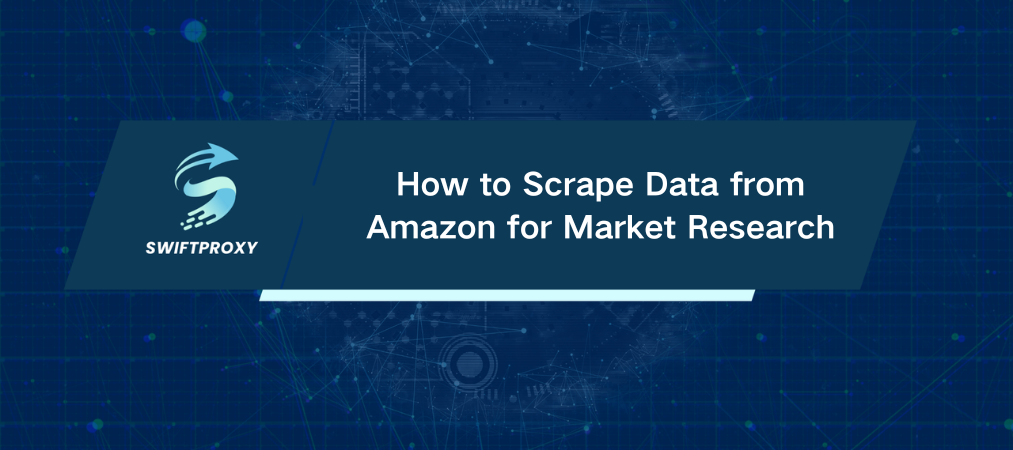How to Scrape Data from Amazon for Market Research

Amazon is a goldmine of data. Whether you're an e-commerce business, a market analyst, or just someone curious about pricing trends, extracting Amazon's product data can be a game-changer. But diving into the world of scraping Amazon might feel intimidating at first. Good news: you don't have to reinvent the wheel. With the right scraper API, you can skip the headache of proxies, CAPTCHAs, and manual coding. Here's your simple, step-by-step guide to getting the data you need, fast.
What is Web Scraping
Web scraping is a method of automatically pulling data from websites—think of it as sending a digital assistant to gather info for you. By using specialized software or algorithms, web scraping navigates sites, finds the relevant information, and organizes it in a clean format for you to use.
For Amazon, that means pulling product details—names, prices, reviews, images—and more. This data is crucial for staying competitive, tracking trends, and optimizing your product offerings.
Why Should You Scrape Data from Amazon
Scraping Amazon opens doors to valuable insights. But let's break down why you should care:
Market Research: Track trends. Discover what sells. Stay ahead of the curve.
Price Optimization: Stay competitive by adjusting your prices based on what competitors are doing.
Product Optimization: Customer reviews can point you to areas for improvement.
Data-Driven Decisions: Make smarter business choices based on the most up-to-date data.
What Data Can You Scrape
From pricing to reviews, Amazon holds a treasure trove of data. Here's a quick rundown of what you can grab with a scraper API:
Product Information:
Name, price, ASIN (unique product identifier)
Brand, category, description, and variations
Media: Images, videos, and 360-degree views
Customer Interactions:
Reviews: Rating, comments, date, helpful votes
Q&A: Customer questions and seller answers
Seller & Sales Data:
Seller ratings and fulfillment method
Best Sellers Rank (BSR), sales rank history, estimated sales
Additional Data:
Stock status, shipping info, promotions, and related products
Ready to dive in? Here’s how you can start scraping Amazon in no time.
Preparing for Amazon Scraping
With an API, scraping Amazon data becomes hassle-free. You don't need to worry about managing proxies or CAPTCHAs yourself. The API handles all of that. Let's break down the tools you'll need:
Python: A beginner-friendly, versatile language perfect for sending API requests and handling responses.
Libraries: If you go with Python, you'll want to install libraries like requests for sending requests and json for handling the data returned by the API.
Step 1: Install Python
Head over to the Python website and grab the latest version (Python 3.x). Installation is straightforward:
For Windows: Run the installer and check "Add Python to PATH."
For macOS: Follow the .pkg installation steps.
For Linux: Use sudo apt-get install python3.
Once installed, test it by running python --version in your terminal.
Step 2: Get API Access
Sign up for a scraper API which gives you access to Amazon's product data. After registering, you'll receive an API key to authenticate your requests.
Step 3: Understand the API Docs
Before you start, take a few minutes to explore the API documentation. You'll find:
Endpoints: URLs to send your requests.
Parameters: Things like product URLs or ASINs.
Rate Limits: How many requests you can make per minute.
Error Handling: What to do when things go wrong.
Step 4: Set Up Your Development Environment
Choose Python, then install the necessary libraries:
pip install requests
Now you’re ready to send your first API request.
Step 5: Write Your First API Request
Here's a simple Python script to get started:
import requests
api_key = 'your_api_key_here'
amazon_product_url = 'https://www.amazon.com/dp/B08N5WRWNW'
endpoint = 'https://example.com/v2/amazon/product'
headers = {
'Authorization': f'Bearer {api_key}',
}
params = {
'url': amazon_product_url,
}
response = requests.get(endpoint, headers=headers, params=params)
if response.status_code == 200:
data = response.json()
print(data)
else:
print(f"Failed to retrieve data: {response.status_code}")
This will send a request to the API, pulling product data from Amazon. If successful, you'll see the data in a structured format.
Step 6: Extract and Process the Data
Once you get the data back, you can parse it. Here's how to pull specific details:
if response.status_code == 200:
data = response.json()
product_name = data.get('name')
product_price = data.get('price')
product_rating = data.get('rating')
product_description = data.get('description')
print(f"Product Name: {product_name}")
print(f"Price: {product_price}")
print(f"Rating: {product_rating}")
print(f"Description: {product_description}")
Step 7: Scale and Automate
If you plan to scrape regularly, automate the process using scheduled tasks. You can even scale your scraping with multiple servers or cloud services as your data needs grow.
Final Thoughts
Scraping Amazon product data unlocks powerful insights. Whether you're optimizing prices, tracking trends, or researching competitors, the right tools make the process simple and effective. Stay ethical, respect the platform's rules, and use the data to guide smarter, more strategic decisions.

















































